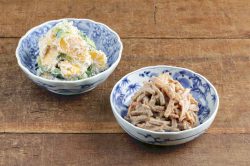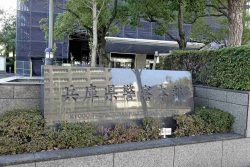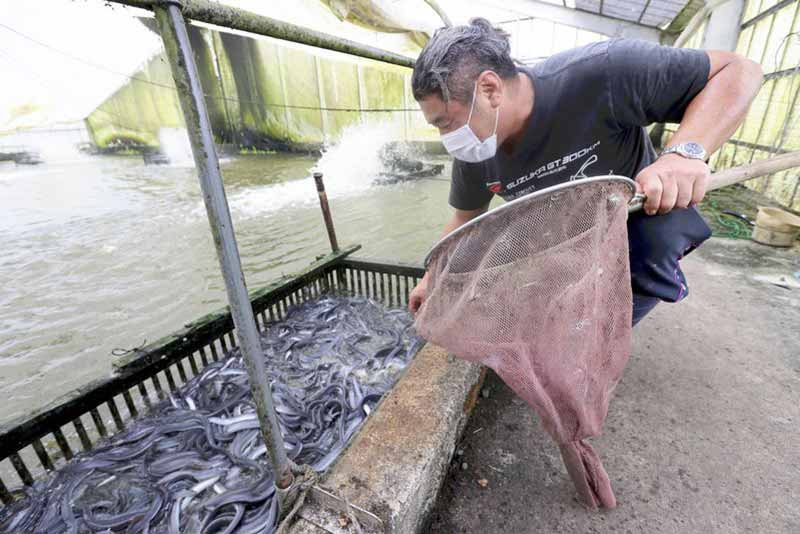
A farmer feeds eels in an aquaculture pond in Kosai, Shizuoka Prefecture, on Sept. 19.
November 27, 2021
The Fisheries Agency plans to include glass eel in a certification system from December 2025 as part of measures to manage stocks of eel, which is often served grilled with a sweet kabayaki sauce at unagi restaurants.
Glass eels are young eels at a certain stage in their development. With about 40% of the glass eels traded in Japan obtained from unknown sources, the certification system is aimed at preventing poaching and other forms of illegal trading.
The measure has been applauded in some corners but eel traders have expressed concern about the increased administrative burden.
The head of a fish farming cooperative in Hamamatsu, Shizuoka Prefecture, welcomed the measure. “It will be clear who caught the glass eels and where they came from, which is a good thing,” said Akihiro Sotoyama, 74.
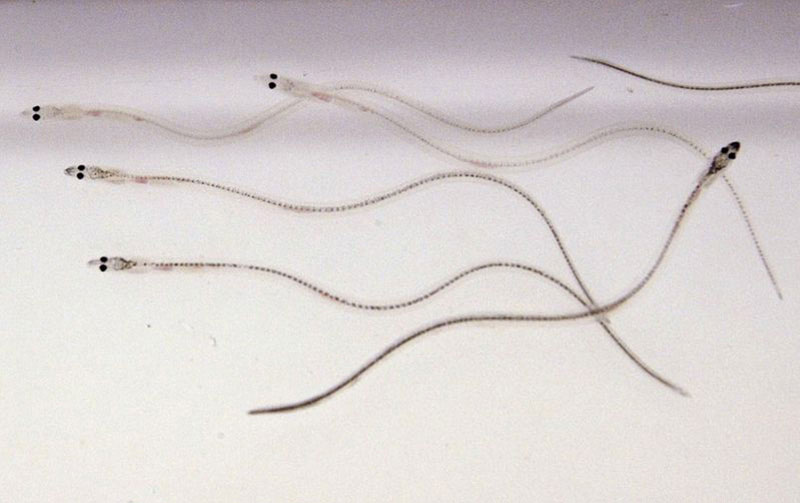
Glass eels
The cooperative has been struggling amid a decrease in the number of glass eels in the market and a sharp rise in prices.
According to the Fisheries Agency, 28 tons of domestically caught glass eels were put into Japanese aquaculture ponds in the 2006 fishing season, but that number had fallen to 4 tons in the 2019 fishing season. The trading price per kilogram jumped from ¥270,000 in 2006 to ¥2.19 million in 2019.
Around 400 farms belonged to the cooperative at its peak in around 1970, but that figure now stands at about 30.
“To protect local eels, it’s important to properly manage glass eel stocks,” Sotoyama said.
Glass eels arrive in Japan from the south on the Kuroshio Current.
Permits issued by prefectural governments are required to catch young eels.
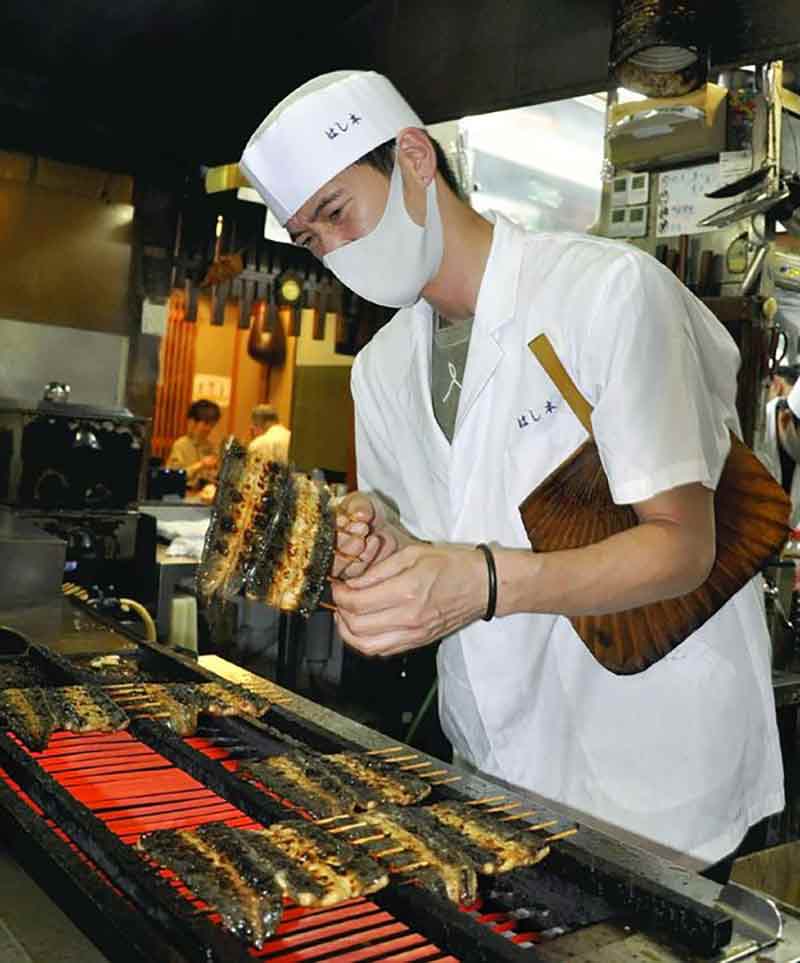
Restaurant owner Shohei Hashimoto grills eels in Chuo Ward, Tokyo.
During the 2020 fishing season, 11 tons of glass eels were caught in 24 prefectures according to government data, but 17 tons of domestically caught young eels were put into aquaculture ponds in Japan. Six tons, about 40% of the total, were from unknown sources.
The Fisheries Agency believes that this is due to poaching and off-the-books transactions by licensed dealers who get higher prices for glass eels when they are sold through unofficial channels.
“It’s impossible for restaurants to verify if [eels] were sourced legally,” said Shohei Hashimoto, the owner of an eel restaurant Yaesu Unagi Hashimoto in Chuo Ward, Tokyo. “We welcome the plan for a transparent trading system, as we’ll be able to serve unagi dishes with confidence that the eels were caught legally.”
However, fisherman and eel traders have expressed concern about the increased administrative burden.
Glass eels are only about six centimeters long.
Fishermen tend to catch a small amount, with several catches combined in conventional aquaculture ponds.
To reduce the administrative burden, catch numbers will not be assigned for each eel. The numbers will indicate production area and trading day.
Under the system, fishermen will have to notify the agency of their catch, and when trading, distributors and eel farmers will be required to keep records of the trades, including the 16-digit catch number.
Retailers and restaurants will not need to record the catch numbers when purchasing adult eels.
“Glass eels pass through many fisherman and traders before entering aquaculture ponds,” said Takashi Moriyama, the head of an association of glass eel traders. “It may be difficult to accurately track the numbers.”
There have been calls for a review of local government regulations on glass eel sales.
A licensed fisherman in the Shikoku region said most of this catch is sold through off-the-books transactions.
“Official traders are only prepared to buy glass eels at low prices so I sell my catches through unofficial channels where higher prices can be charged,” he said. “Instead of increasing our burden with catch numbers, the government should allow us to sell our catches freely.”
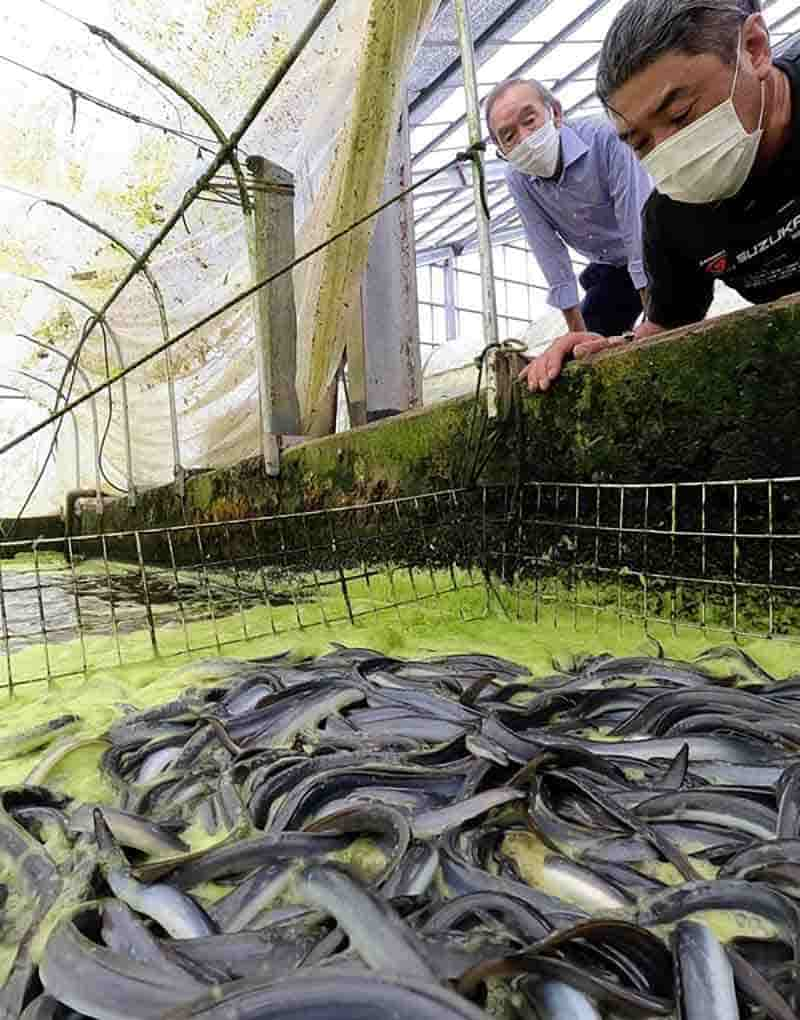
Akihiro Sotoyama, left, checks eels in an aquaculture pond in Kosai, Shizuoka Prefecture, on Sept. 19.
In some municipalities, sales regulations mean the fixed price is lower than the market price, according to Kenzo Kaifu, a professor at Chuo University who specializes in conservation ecology.
“The system allows eel traders and farmers to exploit fisherman. It should be eliminated,” he said.
Kaifu praised the Fisheries Agency’s catch certification plan, calling it “a major step toward appropriate trading that can serve as a measure against poaching, which has become increasingly sophisticated.”
But he also pointed out future issues, saying, ”Imported and farmed eels will need to be tracked so that the entire supply chain can be traced until they reach consumers.”
"Society" POPULAR ARTICLE
-

M4.9 Earthquake Hits Tokyo, Neighboring Prefectures
-

M7.5 Earthquake Hits Northern Japan; Tsunami Waves Observed in Hokkaido, Aomori and Iwate Prefectures
-

Israeli Tourists Refused Accommodation at Hotel in Japan’s Nagano Pref., Prompting Protest by Israeli Embassy and Probe by Prefecture
-

Tsukiji Market Urges Tourists to Avoid Visiting in Year-End
-
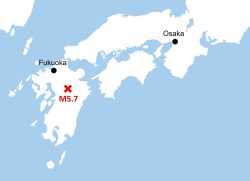
M5.7 Earthquake Hits Japan’s Kumamoto Pref., Measuring Upper 5 Intensity, No Tsunami Expected
JN ACCESS RANKING
-

Keidanren Chairman Yoshinobu Tsutsui Visits Kashiwazaki-Kariwa Nuclear Power Plant; Inspects New Emergency Safety System
-

Imports of Rare Earths from China Facing Delays, May Be Caused by Deterioration of Japan-China Relations
-

University of Tokyo Professor Discusses Japanese Economic Security in Interview Ahead of Forum
-

Japan Pulls out of Vietnam Nuclear Project, Complicating Hanoi’s Power Plans
-

Govt Aims to Expand NISA Program Lineup, Abolish Age Restriction








